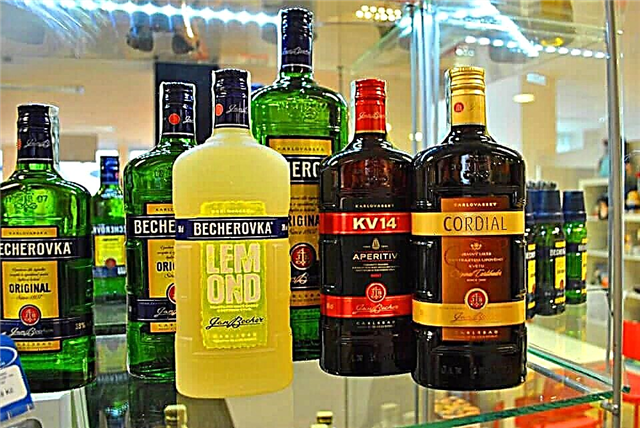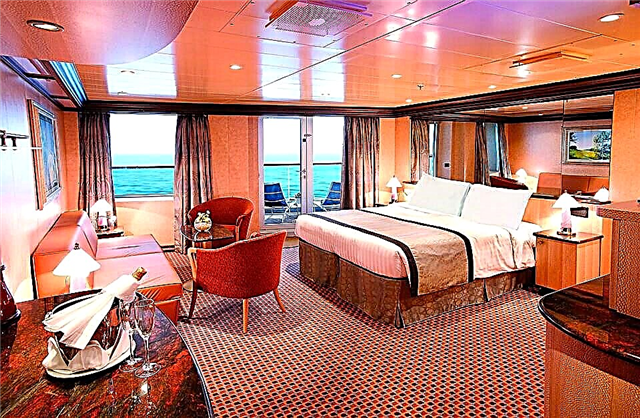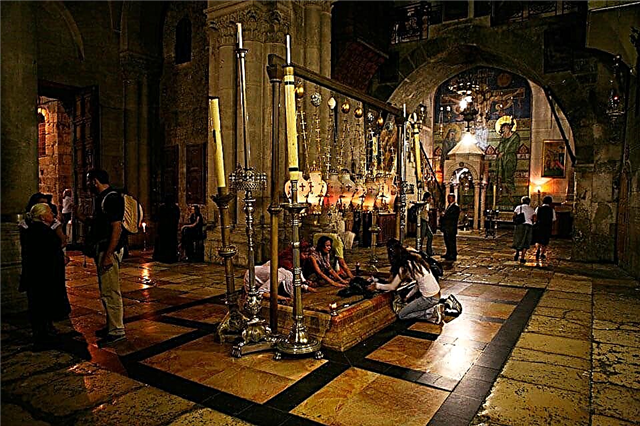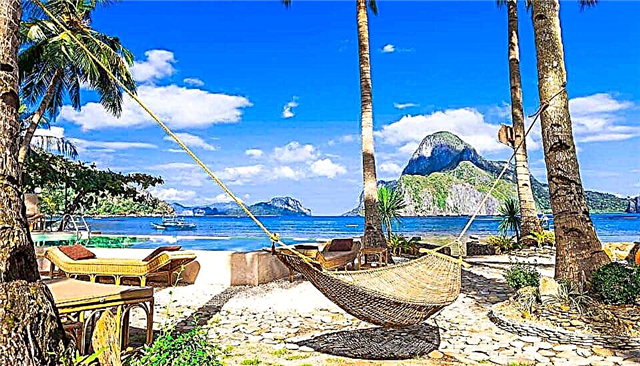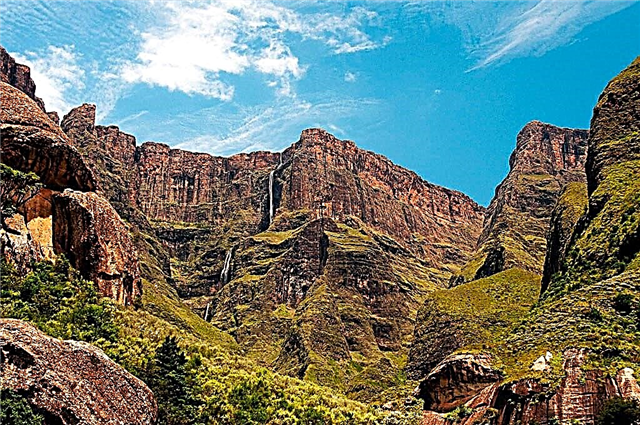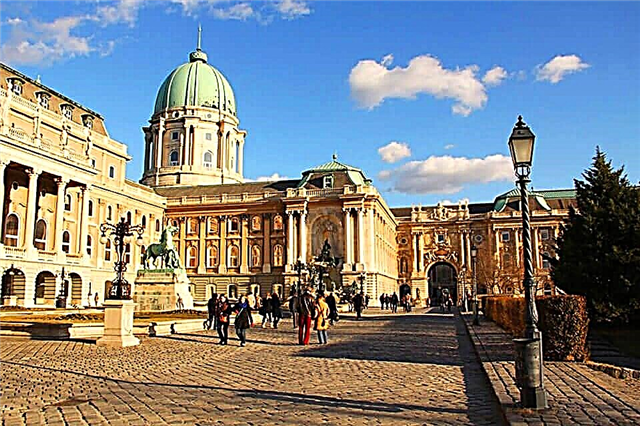One of the most beautiful cities in Europe is called the "Pearl of the Danube". The birth of Budapest took place in 1873 due to the unification of the cities of Pest, Obuda, Buda. In ancient times, the settlements of Aquinck and Kontrakvink developed in their place. Now 8 openwork bridges across the impetuous Danube connect parts of the wonderful city that has preserved numerous historical monuments. Despite the fact that in the XIII century it was completely destroyed by the Mongol-Tatar conquerors. The rich heritage includes architectural wealth, a miracle created by nature: in the form of 120 thermal springs with healing mineral water. On their basis, 15 water complexes were created, which ensure the status of the city as a resort. Numerous museums, galleries and theaters offer interesting events at any time of the year. During a trip here I want to see everything, but this is impossible. What to see in Budapest in 1 day is independently suggested by the information from the article.
Church of St. Matthias

The Gothic masterpiece is located in one of the most beautiful squares in the city. The cathedral is part of the architectural complex of the Buda Palace and is located between the Fisherman's Bastion and the Holy Trinity Square. This church hosted the coronation ceremonies of monarchs from the Habsburg dynasty. Legends were made about him, and even the Turks did not destroy the unique building (they painted over the frescoes), erected in the 13th century.
The multi-colored roof, the original architecture, built on a harmonious combination of Gothic and Art Nouveau, the gate on the main facade, the rosette window and the famous Matthias bell tower create an attractive appearance of the church. Nearby is a miniature model for the blind. Inside, the church is decorated with rich stained-glass windows reflecting stories from the Bible, carved wood ornaments.
Two elements, built around 1260, have survived: the columns at the Bela tower. On their tops, figures of monks and demonic animals are visible. At the bottom there is an ancient baptistery, a baptismal font. On the northern wall there are chapels, sarcophagi of King Bela III, his wife, Saint Stephen. Under this chapel is the gallery, which houses the Museum of Religious Art.
Fisherman's Bastion

The famous landmark of the country looks like a square surrounded by a gallery. It is 10 m long and 8 m wide. There are 7 conical towers along the gallery. They are the symbol of the tribes that founded Hungary. The construction of the Fisherman's Bastion (a beautiful snow-white structure) was designed by the architect Frigies Schulek from 1899 to 1905. The bastion never served as a defensive structure. From an architectural point of view, it was created as a backdrop for the Matthias Church, but later became a popular attraction itself.
Previously, fish was sold on the Holy Trinity Square. There was a fortress wall around it, which served as a protection for fishermen in the Middle Ages. The new bastion appeared during the reconstruction of the Royal Palace in honor of the millennium of Hungary. From the observation deck of the Fisherman's Bastion, tourists can enjoy beautiful views of the river, Pest (especially from the main tower of Hiradash). During the construction of the bastion, some secrets hidden under the Buda Hill were discovered: tunnels, passages.
Guests of the city are invited to visit the underground chapel of St. Michael. It houses a 3D cinema that shows interesting films about the history of Hungary. It is convenient to get to the Fisherman's Bastion by buses 16, 16A, 116. The way back take the stone stairs leading almost to the Danube.
Royal Palace

The historical center of the city was formed in the 13th century. Starting with King Bela IV of Hungary, the royal residence was at Buda Castle, which rises on the right bank of the Danube. The castle was repeatedly destroyed, rebuilt and continued to witness historical events in the country. The last reconstruction was carried out from the end of the IXX to the beginning of the XX centuries. The new palace is one of the most beautiful buildings in the country. After the departure of the Habsburgs in 1920, it became the seat of Horthy Miklos.
Now the facade of the majestic architectural structure stretches along the Danube embankment for 300 meters. In the evenings, it sparkles with thousands of lights that are reflected in its stormy waters. On the territory of the palace there is a library, a museum of the history of Budapest, the National Gallery, which contains a rich collection of unique works of the country's artists. There are also numerous statues, fountains, gates, and other elements of the palace decoration.
Next to them, legends come to life that came from ancient times: associated with the appearance of the bronze bird Turul, the statue of the commander of Savoy, etc. Near the castle there are annual festivals and holidays (crafts, beer, wine). You can get to the top of the hill by bus routes and the Sciclo funicular.
Buda maze

This is the name of the caves of Budapest, accessible to tourists. The route along them is not a tricky labyrinth: it is a looped tourist path with several dead ends and signs for returning to the main route. The last restoration of the labyrinth took place in 2013. The creation of unique caves, catacombs at a depth of 16 km in the city center (under the Royal Palace and residential area) belongs to natural forces. Archaeologists have confirmed the existence of natural undergrounds over 500 years ago.
Gradually, they settled down for housing, under wine cellars, prisons, a military hospital. New halls, passages, underground vaults appeared. The total length of the labyrinth is 1200 m. Some places are available for visiting. They represent a modern version of the museum with installations reflecting the historical events of the country and its mythology. Wax figures in antique clothes, cave paintings, furnishings from different times.

Prison shackles, a coffin made of stone, a gravestone labeled "Dracula", etc. All exhibits are contemporary pieces. There are no historical artifacts in the labyrinth. The labyrinth is illuminated with green lamps, similar to kerosene sources. There are places where it is always dark. For the safety of travel, special ropes have been laid along the walls and vaults of the caves. The entrance to the caves is in the basement of house 9 on Úri utca street.
Erzsebet bridge

The modern suspension bridge was built on the site of a beautiful structure named after the Empress Elizabeth of Bavaria (known as Sisi). Its grand opening took place in October 1903. Until 1926, the bridge was considered the longest single-span bridge in the world. It had 4 lanes and two sidewalks. Since 1914, trams began to move across the bridge. In 1934, the beautiful chain bridge was completely blown up by retreating German forces. The new bridge was built according to the requirements of modern technologies and materials. It became a suspension bridge for road transport.
He reconnected the two banks of the Danube in November 1964. The length of the bridge is almost 379 m, width is about 28 m. It is 10 m wider than the previous structure, but much lighter. On the asphalt concrete surface there are 6 lanes for cars, two sidewalks with a width of 4.75 each. The bridge has sturdy metal railing with a simple pattern. It is clearly visible from the top of Gellert Hill. A project by a specialist from Japan was used to illuminate the bridge. During national holidays, it is illuminated by the shades of the Hungarian flag.
Mount Gellert

The picturesque hill was the center of Buda winemaking in the 18th century. Its slopes were decorated with numerous vineyards, and at the very top there was a calvaria. Ritual processions of residents were performed here during the holidays in honor of the Resurrection of Christ.The area got its name from the Catholic Saint Gerard Sagredo Gellért, who was executed by the pagans. He was thrown from the mountain into the water in a barrel of nails. According to ancient legends, witches flocked here for the Sabbath. After the suppression of an unsuccessful uprising in 1850, the government decided to create a defensive fortress-citadel on the top of the mountain.
She became one of the first landmarks of the country. Not far from the walls of the citadel rises a huge 40-meter statue of Liberty: the figure of a woman with a palm branch in her raised arms. Now this composition (the figure of the soldier-liberator was removed from the ensemble in the early 90s) is dedicated to the heroes of the Hungarian people. The mountain rises above the city. The most beautiful views of the two banks of the Danube open up from a height of 235 meters.
Gellert Baths

The famous hill is famous not only for its historical past, beautiful landscape, unique viewing platforms, but also for valuable underground storage rooms. The famous healing springs are hidden here, on the basis of which one of the 13 active baths of the city was built. The building, erected in the Art Nouveau style at the beginning of the 20th century, resembles a fairytale palace. It is very easy to imagine yourself as a king, resting in the jets of healing streams.

There is a legend that once upon a time there lived a hermit in a cave who healed from many diseases. Antique stucco molding, dome, interior decoration with stained-glass windows complement these magical dreams. The atmosphere of luxury reigns in any bathing room. Anyone is allowed to plunge into it. Practically all existing types of medical services operate in the bath.
There is a Finnish sauna, steam baths, a women's and men's thermal department. In summer, there are 13 swimming pools in the bath (10 are under the roof) with water of different temperatures (in winter 5). For aqua aerobics in the summer, an open-air wave pool is built and is decorated in a Turkish style. There is a sitting pool with a depth of about 1 meter and filled with water from T 36 Address: Kelenhegyi út 4.
Liberty bridge

This is the name of the new Franz Joseph Bridge. It connected the Customs and Jury Squares. The former bridge is considered an example when the project, all stages of manufacturing were done by the specialists of their country. At this time, the era of iron structures began. Technologies made it possible to create steel, iron for elements of bridges of any type (chain, hanging, arched) from blast furnace iron. The wooden structures were replaced by frame structures made of reliable iron. They made it possible to realize the architects' dream: to create an economical, beautiful, simple ensemble.
The strong bridge frame was made at the Hungarian Royal Railways factory. After the explosion of the central part of the building in 1945, the bridge was completely restored. His rebirth took place in August 1946. It was the first bridge rebuilt after the war. Another reconstruction of the architectural structure was completed in 2009. Now the bridge is considered one of the most beautiful buildings in Europe. It is decorated with original cast iron. The figures of the mythical bird Turula, the crown of the first ruler of the country, are fixed on high pillars.
Central market

The decision to build a large convenient market for residents appeared almost immediately after the birth of the city. Numerous small markets did not meet the needs of the population. At the same time, in 1897, 4 more large places for trade were opened along with it. The building of the central market was erected in accordance with the project of the Hungarian architect Samuil Pec.
Modern structures with original openwork elements, created according to the latest engineering ideas, made it possible to create a unique image of the building. The neo-Gothic building with beautiful corner towers and colorful ceramic tiles quickly became a local landmark. A wide range of goods attracted residents and guests of the city here for shopping. Any product located on two floors is offered to buy here.
For a short rest, lunch, it is proposed to use the services of a cafe, restaurant. The market is located at the end of Vaci street, next to the Freedom Bridge. Works 6 days a week. Day off on Monday. It is easy to get to the central market by public transport. The largest number of visitors is observed on Saturday mornings.
Vaci street

In the central area of the city, from the Vörösmarty Square to the Customs Square (Fevam), there is an important pedestrian zone. People walk on it, shop, go to the Central Market of the city. The length of the street is the same as that of the Arbat of Moscow (1200 m). Vaci Street runs parallel to the embankment. Numerous shops, salons, shopping centers, cozy cafes, restaurants, hotels sparkling with lights are located along its entire length. It houses the original boutiques of the world's fashion giants (Zara, Bershka, C&A, H&M, Benetton).
In the northern part of the street, there are large trade centers for branded porcelain. Small souvenir shops, galleries are located on the southern section of the street. During the walk, it is proposed to visit the Istvan Chok gallery with offers to purchase samples of painting, icon painting, sculpture. Not far from the gallery is the Libri book store. It presents the largest collection of the country's works in a foreign language.
Lajos Kossuth Square

On the east side of the façade of the Parliament building, there is a large square named after the Hungarian statesman. Monuments to Lajos Kossuth and Ferenczi Rákóczi adorn the square. Previously, this place was a place for unloading ships, and the area was called Stadtischer Auswind Platz. At the end of the 19th century, they began to strengthen the Danube bank at the expense of an ordinary landfill. The place received the dissonant name of Tömőtér Square.
It changed to Parliament Square after the construction of the building in the period 1898-1927. Since 1927, the place has been given its modern name. At this time, a complex of administrative buildings was formed around: the Palace of Justice, the building of the Ministry of Agriculture, the Ethnographic Museum. The complex shape of the square (it includes three rectangles offset in relation to each other) goes around the Parliament building.
In the central part is the Lajos Kossuth memorial ensemble, designed by the sculptor Janos Horvath. An equestrian statue of Francis II Rakosi, the prince of Transylvania, leader of the 1711 uprising, appeared in 1936. Its pedestal is decorated with the inscription "With God for the Fatherland and Freedom." When descending to the river, it is proposed to see the figure of the poet József Antalu looking at the Danube. The sculpture was created by Laszlo Marton in 1980.
Danube embankment shoes

Monuments to the perished Jewish population can be seen in many cities around the world. This memorial is one of the "Most piercing monuments in the world." Finding it is quite simple: it is located on the waterfront next to the Parliament building. A mysterious row of shoes overlooking the Danube makes you stop, shut up and flinch at the memory of the unusual brutality of the war.
People were brought to the embankment and executions were carried out in an unusual way. Another pariah of residents was tied up in chains of 60 people and shot at the first person. Falling, they carried the rest with them. At the same time, all the doomed took off their shoes and left their shoes on the banks of the Danube. 60 pairs of men's, women's, children's shoes, made of stone, stretched out along the embankment as if alive.
As if they had been taken off for a minute, and the owner is about to come ashore. Nearby there is a stone bench with inscriptions in three languages: Hebrew, Hungarian, English. The monument was erected in 2005. Along the cruel chain of shoes, there are always lamps and flowers. The city has several monuments to the victims of the Holocaust. The tree (weeping willow, symbolizing sorrow) is next to the synagogue. There are 700 metal sheets with the names of the victims on it.
Hungarian parliament building

The decision to erect a building on the territory of Pest was made in 1843.The country's historical events made it possible to implement the conceived idea in 1903. The site was chosen on the east coast of the Danube between the old Szechenyi and Margit bridges. The majestic architectural structure of the neo-gothic style with elements of the architecture of the east is clearly visible from many points of the city. Parliament is considered the largest building in Hungary. It has 10 small courtyards, 29 staircases, 691 diversified premises. The central dome ends at a height of about 27 m.
Its diameter is 20 m. On both sides there are premises for parliamentary sessions and conferences. The interior of the halls is decorated in the style of the Middle Ages: mosaic panels, stained-glass windows, a lot of gilding, sculptures. There are 16 of them installed only among the domed hall (these are the figures of kings, rulers of the country). Since 2000, historical artifacts have been kept here: the orb, the crown of St. Stephen, the scepter. There is a small museum inside. There is a guard of honor in front of the building, dressed in a historical uniform.
Freedom Square

In the green area of a large square, it is pleasant to relax after walking, admire the buildings of ancient architectural design, listen to stories about the country's historical events. Freedom Square appeared at the end of the 19th century. Previously, there were barracks, garrisons of military units of Austria, prisons for political prisoners. At this place, Lajos Battyani (the leader of the uprising against the Austrians) was executed.
In 1926, on the site of the demolished barracks, the Eternal Flame was lit in honor of their feat. After the Second World War, a monument in honor of the soldiers-liberators from the USSR appeared nearby. On the occasion of the end of the Cold War and the country's independence, a monument to Ronald Reagan was erected on the square. Of greatest interest is the memorial dedicated to the victims of the Nazis.
The sculptural group includes the figure of the Archangel Gabriel with a formidable black raven. At the foot of the ensemble, the names of the cities where thousands of Jews perished are written. There are always fresh flowers, photographs, personal belongings of the victims. The square has a rectangular shape with a solemn, beautiful architectural ensemble of historical buildings of the XX century. In the building of the National Bank, guests of the capital are invited to see the exposition of old banknotes, coins and order any for themselves.
Hungarian State Opera House

The emergence of Budapest is associated with the merger of three cities, their cultures, histories and traditions. One of them was opera performances that have been taking place in Hungary for over 200 years. They took place in the homes of aristocrats. Therefore, the proposal of outstanding composers to create an opera house is not surprising. In 1884, the famous theater (it was called the Royal Opera House), created by the country's specialists, was opened. The first operas performed in the presence of Emperor Franz Josef were the Hungarian operas Laszlo Hunyadi, Bank Ban, part from the German opera Lohengrin by Wagner.
The first work in Hungarian was the opera The Barber of Seville, performed in 1844. Musical masterpieces by Verdi, Mozart, Wagner, Rossini sounded under the arches of the theater. They were performed by famous singers Audrey, Ellinger, singers Derine, Grange, Holloshi. In different periods Berlioz, Richter, Rubinstein, Wagner performed the role of the conductor. The development of ballet performances in the country is associated with the first production of the ballet "Wooden Prince" by Bartok at the theater.

Now the performances of the theater's ballet group are known in many countries of the world. Since 1853, the theater orchestra has become an independent symphony orchestra under the name Budapest Philharmonic Society. After a large reconstruction in 1984, visiting the magnificent masterpiece of Hungarian architecture (neo-Renaissance style with baroque elements), listening to great and talented performers is possible only with advance booking.
Palaces of Clotilde

In the historical center of the city, not far from the Erzbet bridge, there are two residential buildings of original architecture. Accommodation is now located on the upper floors of the buildings. Downstairs there are cafes, shops, boutiques, the Budapest Gallery. "Stone twins" for Clotilde (daughter-in-law of Archduke Joseph) appeared in 1902. They guard the entrance to the bridge and are built in the Rococo style with pointed spiers pointing high into the sky. The facades of the buildings are decorated with oblong windows, carved arches, numerous bas-reliefs with figures of historical figures of Hungary.
The buildings are completely similar to each other. The project was designed by architects Kalman Girgel and Florisch Korb. The main purpose of the buildings was to use them as tenement houses that bring profit to the family. The owners never lived in them. For the first time in Europe, elevators were installed in buildings, which are becoming fashionable as a technical innovation. The buildings harmoniously complement the architectural composition of Sabadshaito Street. They were included in the UNESCO World Heritage List.
Bath Rudas

The famous bathhouse, built during the Turkish rule. The Ottomans erected the luxurious Rudas baths at the foot of Gellert Mountain with special baths for the pasha. They still work. Under the multifaceted glass dome, you can not only bask in the warm thermal water, but also observe a beautiful panoramic view of the Danube and its surroundings.
Over the 500 years of its existence, the baths have been restored, supplemented, while maintaining the original spirit of Turkish procedures. They were originally used by men. Since 1936, women have been allowed to visit the baths on certain days (even after the reconstruction of 2005, the days of the day of visiting men were preserved). The modern complex Rudash consists of a bath, swimming pool, wellness.
It is formed from six thermal pools of different depths and temperatures. The complex includes a sauna, steam room. The water used improves the functioning of the respiratory organs, lowers blood pressure, heals rheumatism, joints, restores the microflora of the stomach. Water contains a large percentage of calcium, sodium, magnesium, etc. It was given the status of medicinal radioactive water. Visiting the Rudash Baths is offered to people who have no restrictions on certain diseases.




